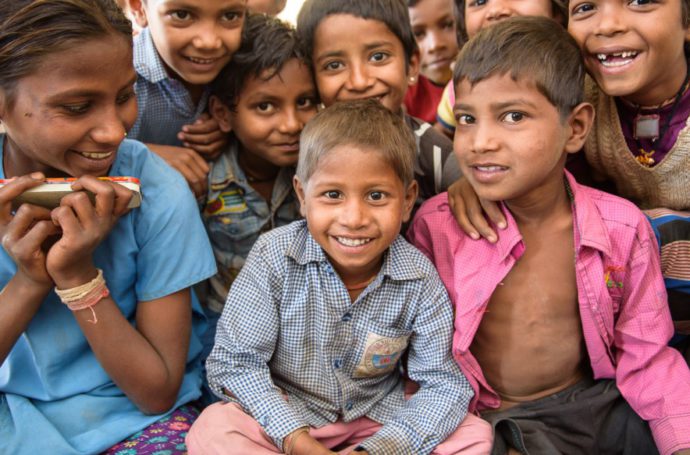In October 2016, the Stop Child Labour coalition commissioned an external evaluation of its ‘Out of Work, In to School’ programme, that ran from May 2014 to April 2017 and is funded by the Netherlands Ministry of Foreign Affairs. The aim of the programme was to establish child labour free zones using an area-based approach in Asia, Africa and Latin-America, and to mobilise Corporate Social Responsibility (CSR) initiatives and companies to actively address child labour in their full production and supply chains in order to contribute to the creation of child labour free zones and child labour free supply chains. Our ‘No Child Left Behind’ project is part of this larger programme and was also evaluated.
A quick snapshot of what has been achieved so far:
- 361 children were prevented from child labour and a whopping 593 were withdrawn from child labour, on a total of 1019 children that were initially identified as ‘out of school’
- 7 schools (6 primary, 1 secondary) are now running fully functional compared with only 1 before; 8 pre-school centres (Anganwadis) are also present whereas none was operational before.
- Additional teachers to be appointed by June 2017, thanks to strong lobbying of state government.
- 84 adolescent girls (15-18y) completed stitching training and 22 young men (15-18y) finished a 6-months electrician education, allowing them to be more self sufficient without having to rely on the cobble trade.
- 17 Women’s self-help groups (SHG) were established, consisting of 197 members. SHG’s are structures for collective saving and facilitating access to credit. They are also to be seen as an instrument of empowerment for women.
- 570 people received access to pensions or benefits for widows that they were not even aware of.
- 586 workers received a health & accident insurance, paid for by the employers. Manjari hopes to extend the scheme to all workers in 2017.
- 69 cobble yards & traders have taken the issue of banning child labour seriously with violation of this ban being sanctioned. 14 yards have even installed camera surveillance
Obviously, the evaluation also cites challenges, such as the difficulty to re-enroll children aged between 10-14y as they have established a spending pattern as well as the lack of motivation among teachers who prefer to work in a city rather than in a rural area such as Budhpura. The continuous flow of migrant groups and limited social interaction between migrant groups with resident community members, makes community mobilisation, establishing local structures and raising awareness, equally difficult.
Nonetheless, despite all its flaws, respondents in the interviews and focus group discussions attribute increased enrolment and reduced drop-out rates mainly to Manjari’s interventions. One respondent explains:
A few NGOs have come and gone over the past years, but with Manjari it is different. Manjari is very grounded in its interventions and activities are at the grassroot level to help the most vulnerable people.
Community members point out that Manjari made them aware of rights that they did not know they had:
Manjari introduced widow and old age pensions to the people, no one even knew of such entitlements.
The report calls out to continue the project so that it truly becomes sustainable. All stakeholders involved are fully aware of this and have already pledged their commitment for the next three years 2017-2020).
You can download and read the full report here: http://www.stopkinderarbeid.nl/assets/Final-report-Hivos-child-labour-programme-evaluation-2017_ZN.pdf

